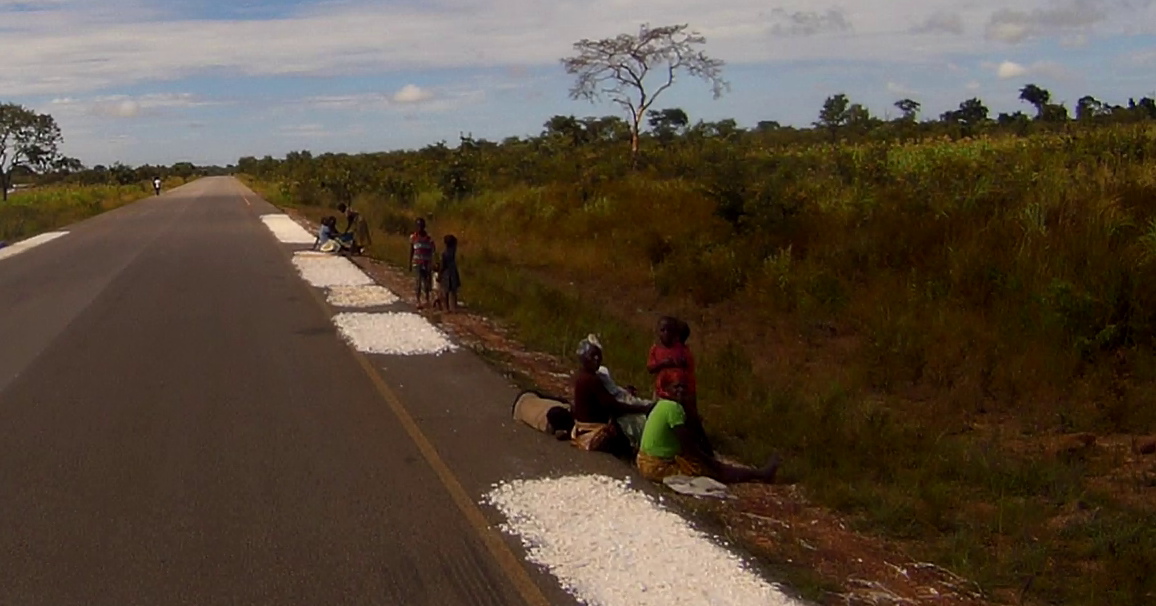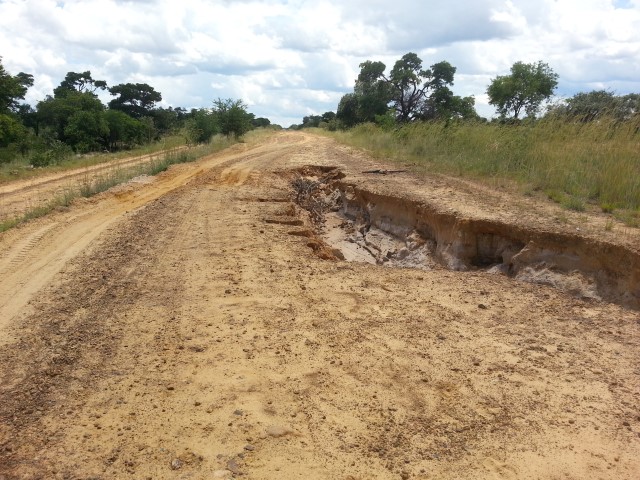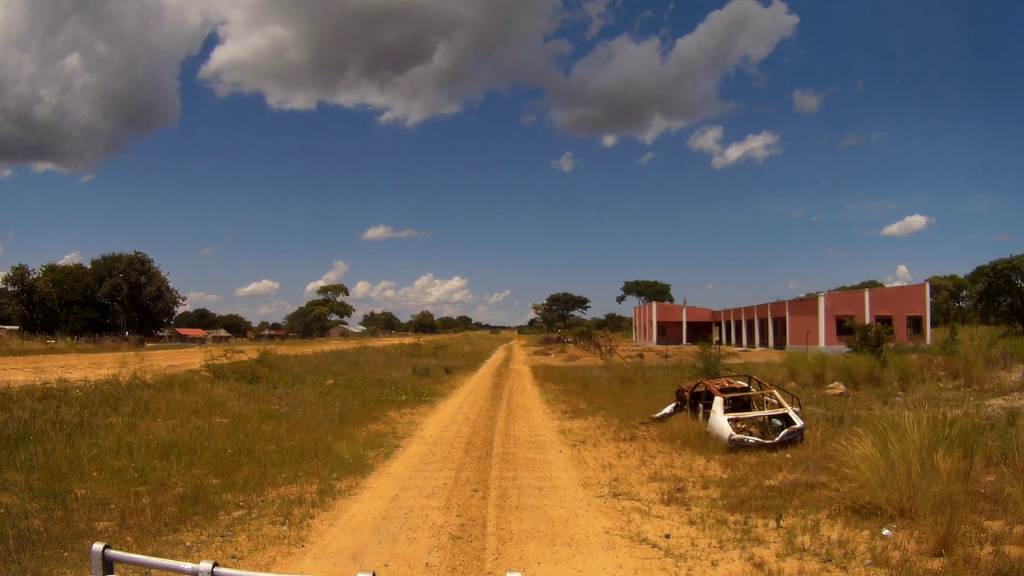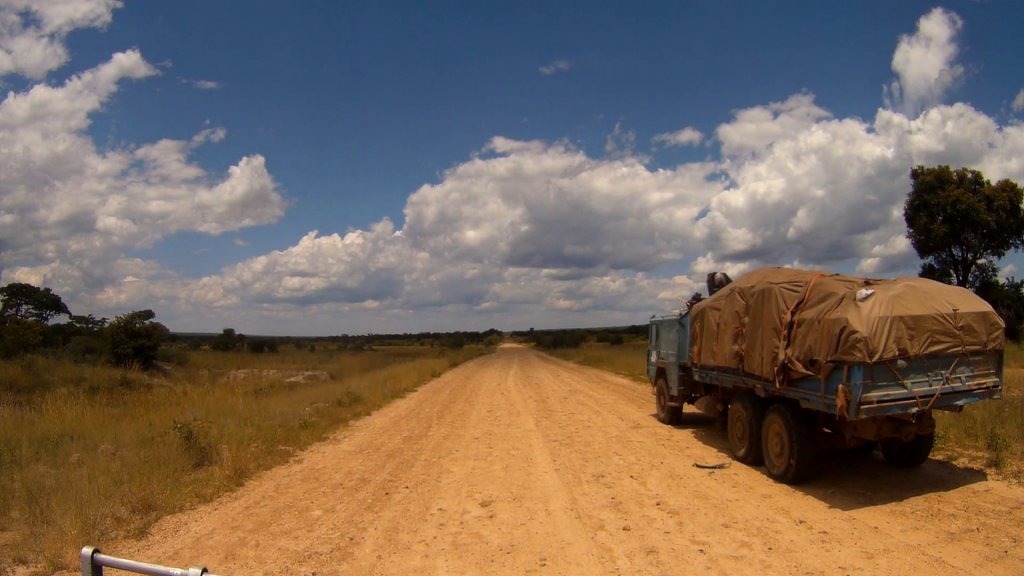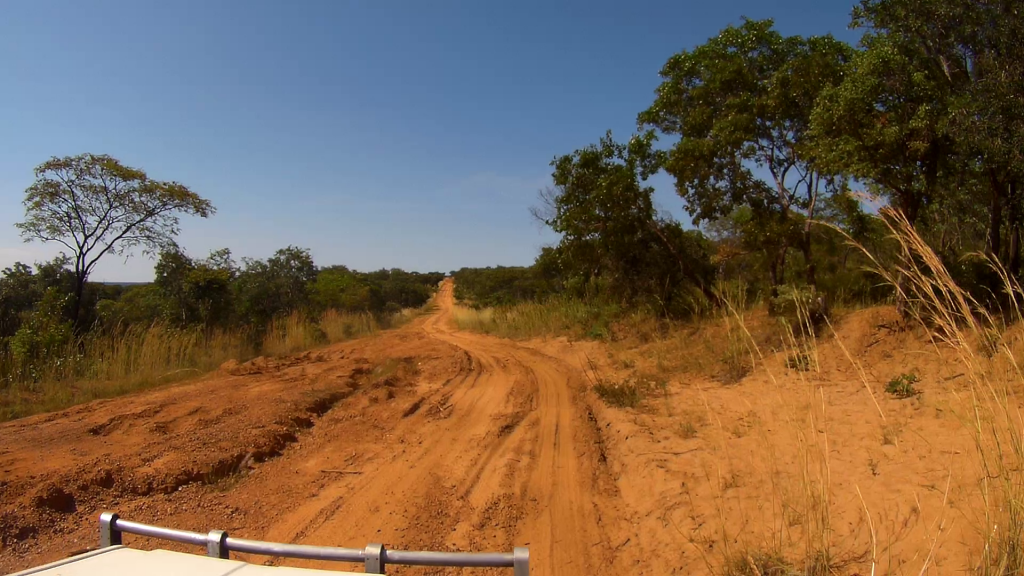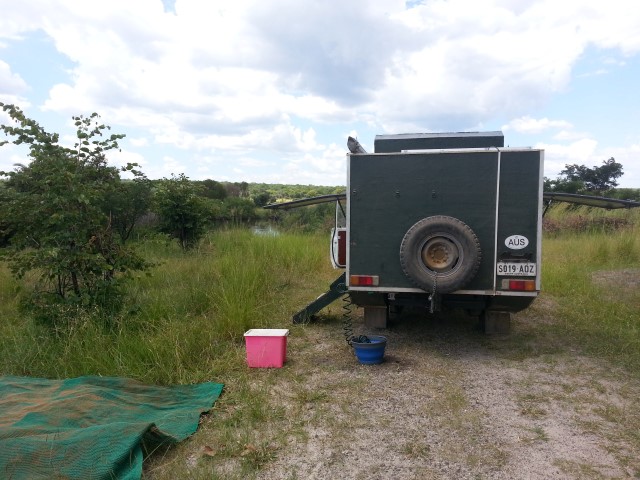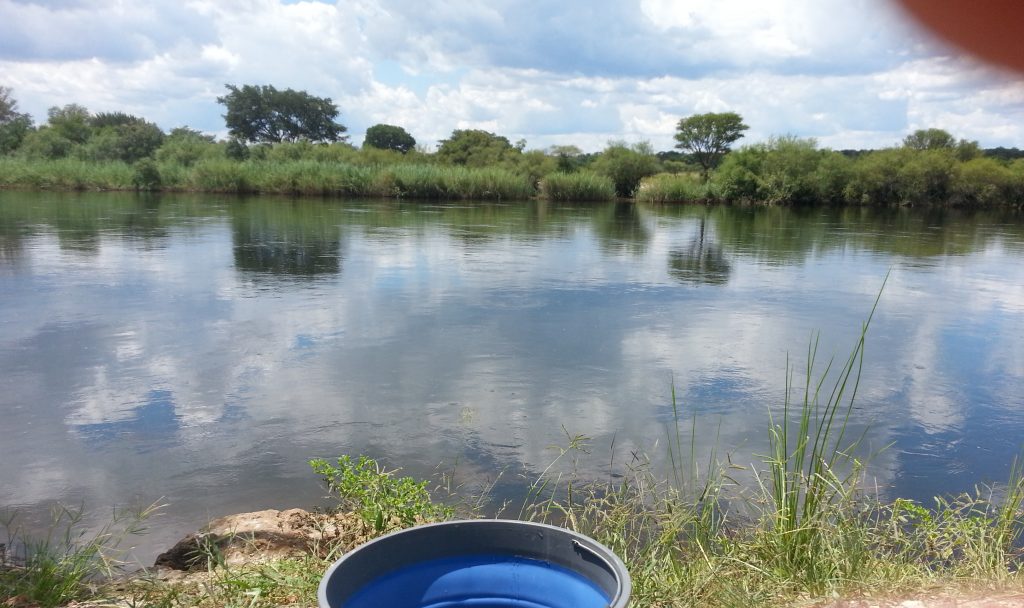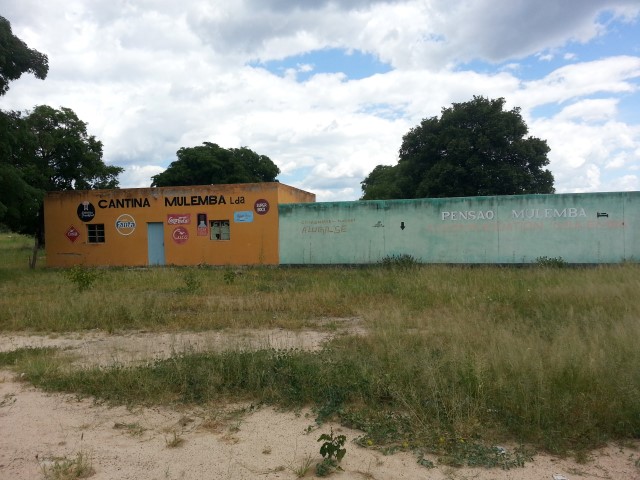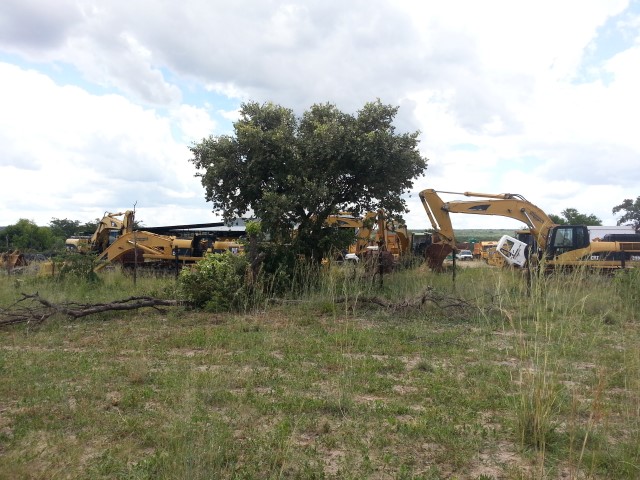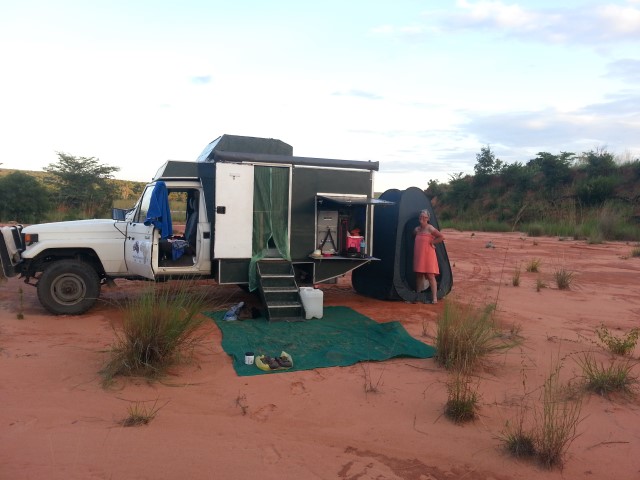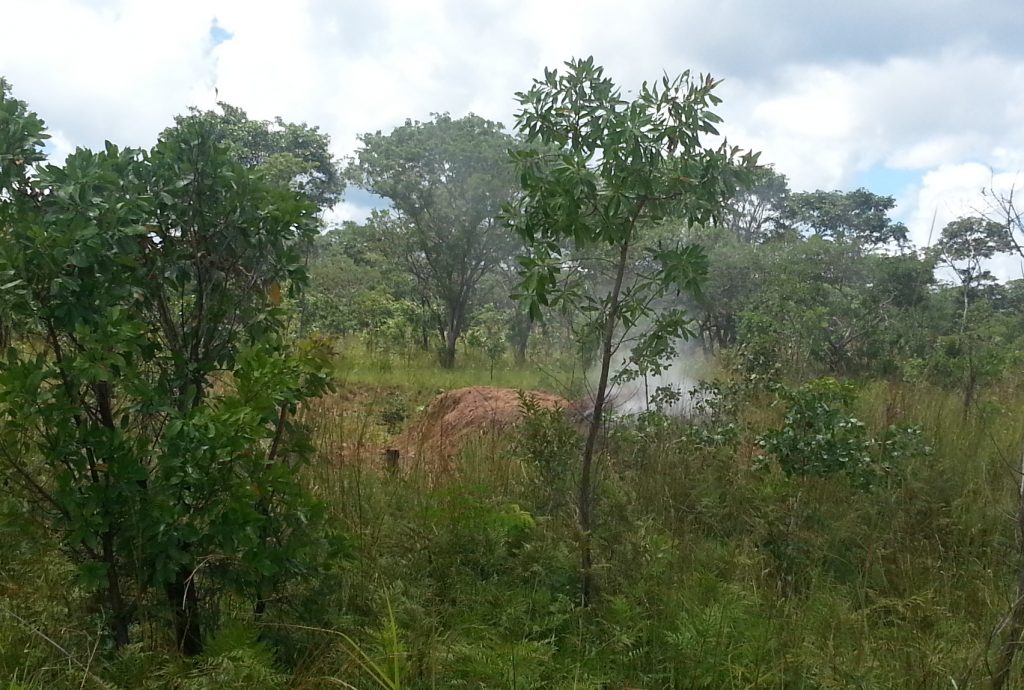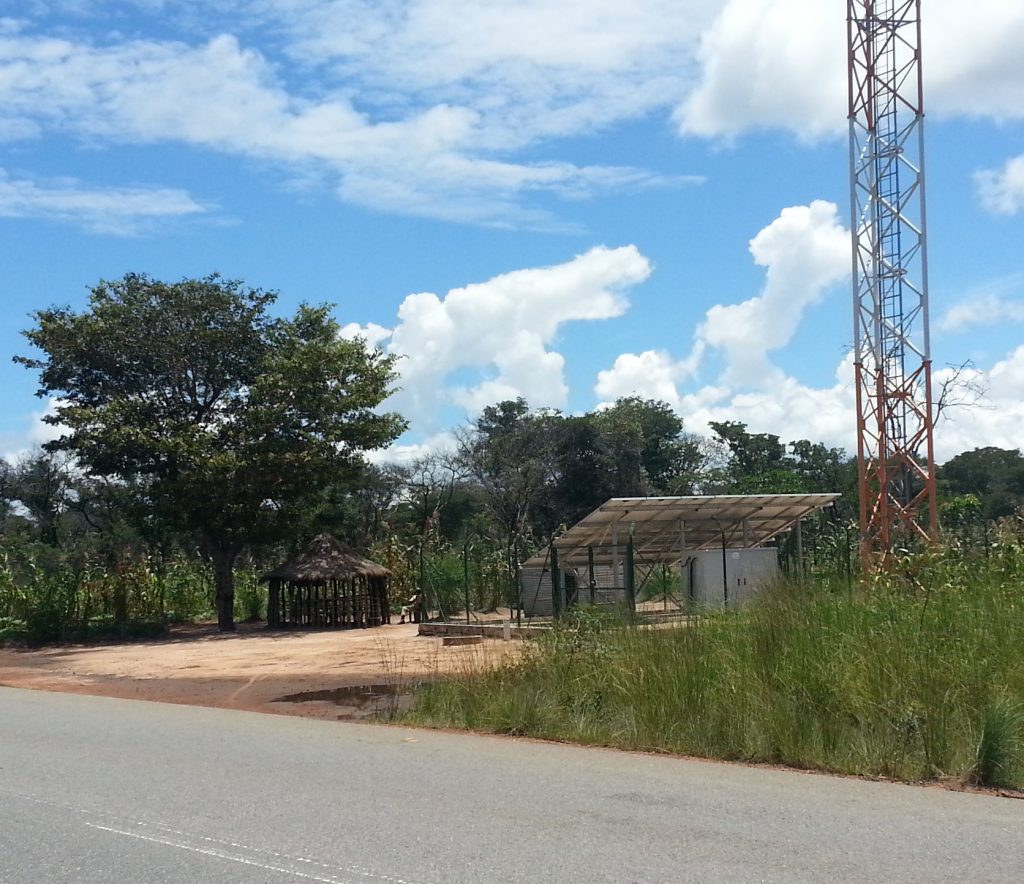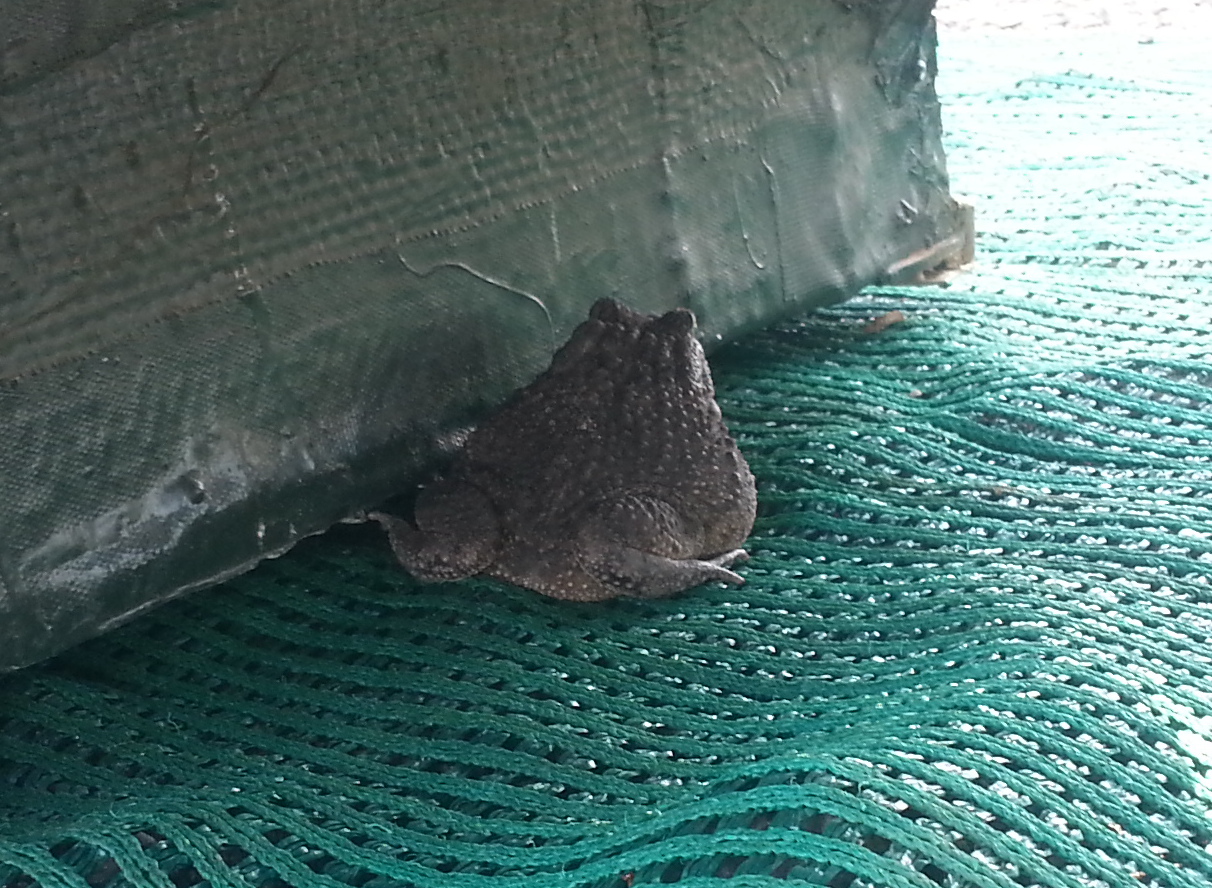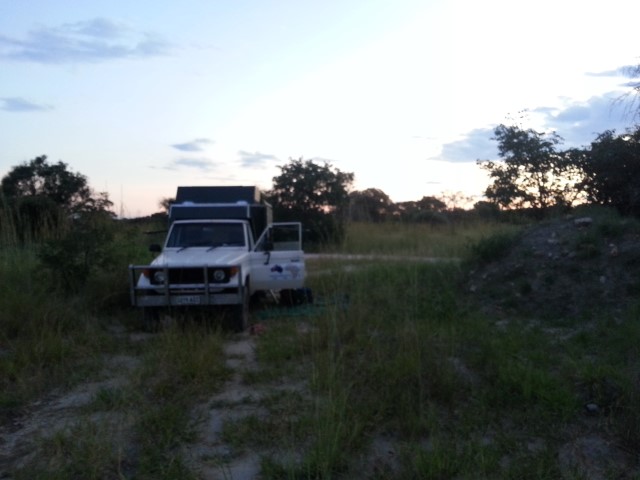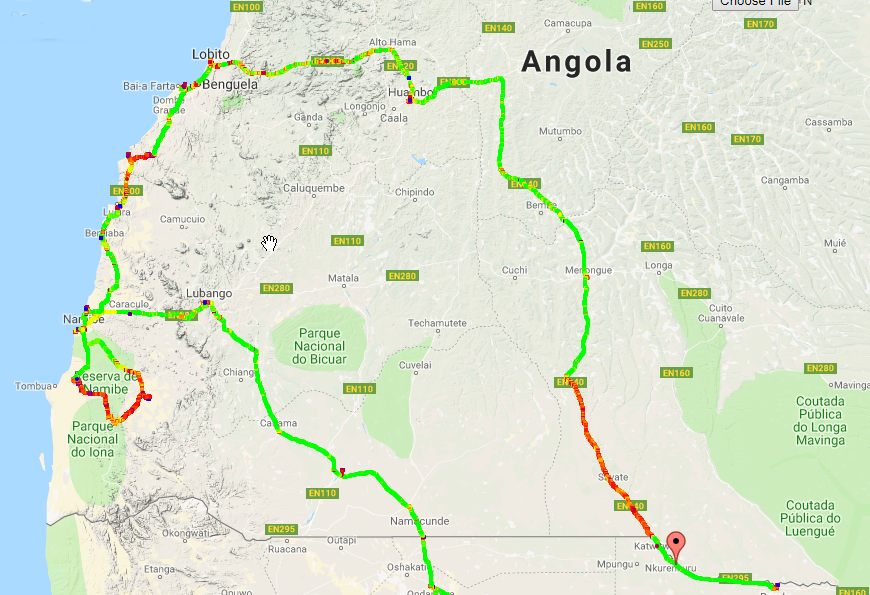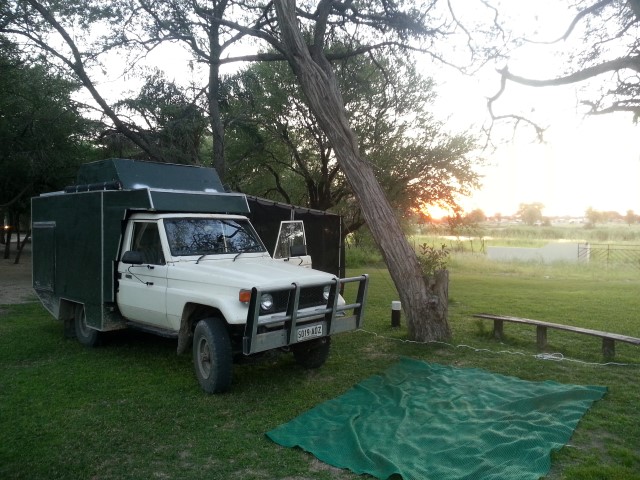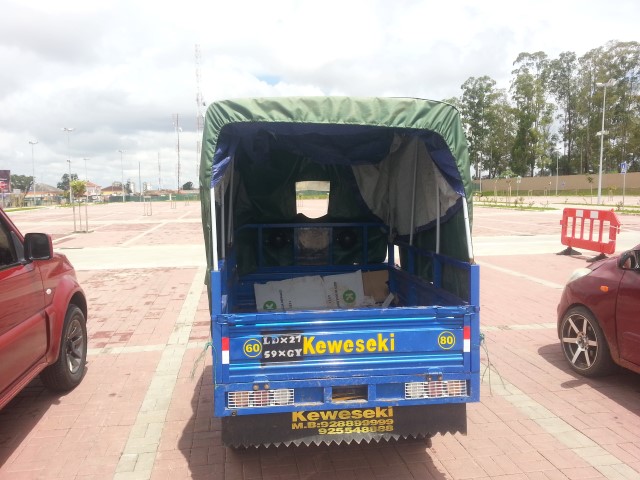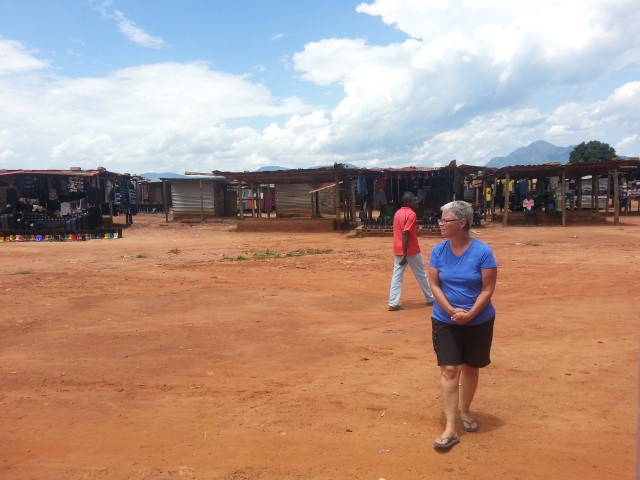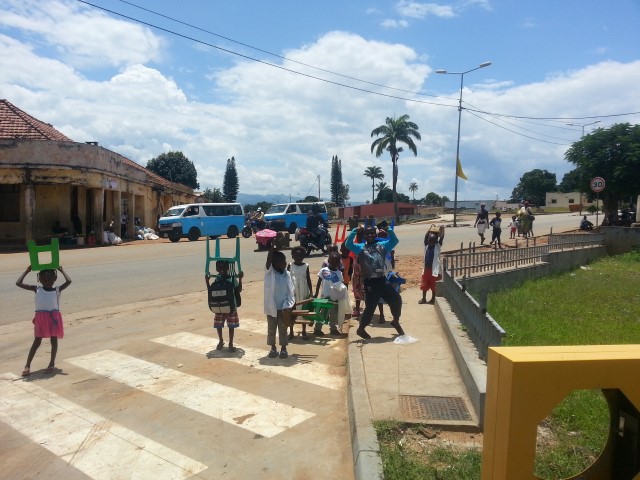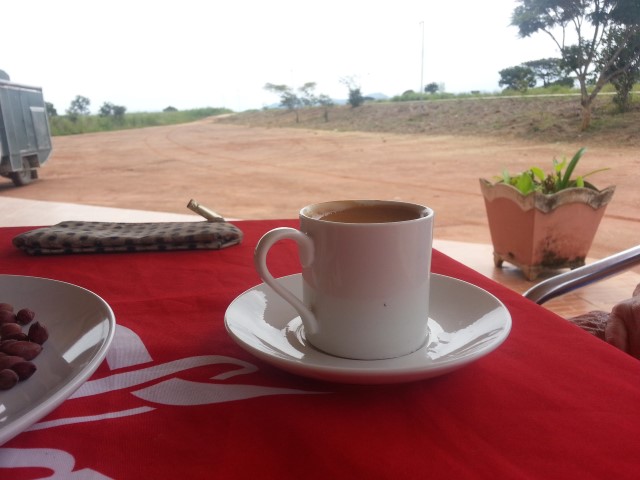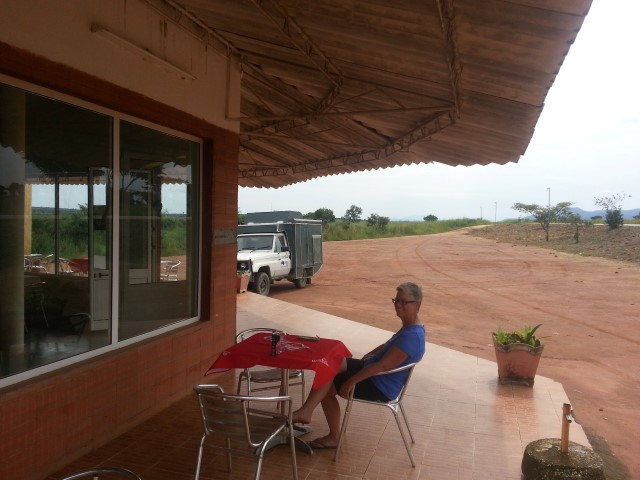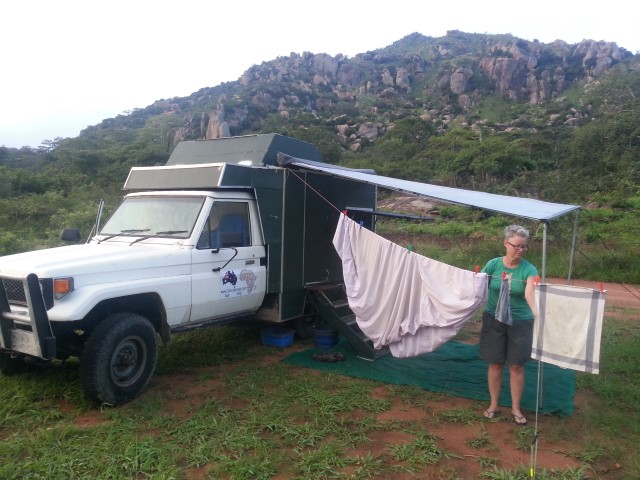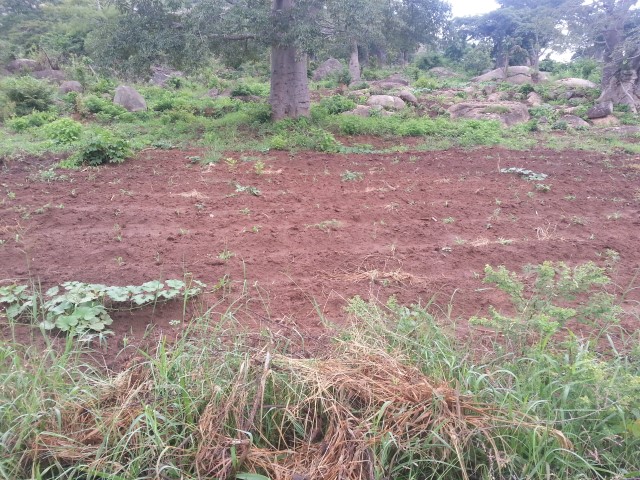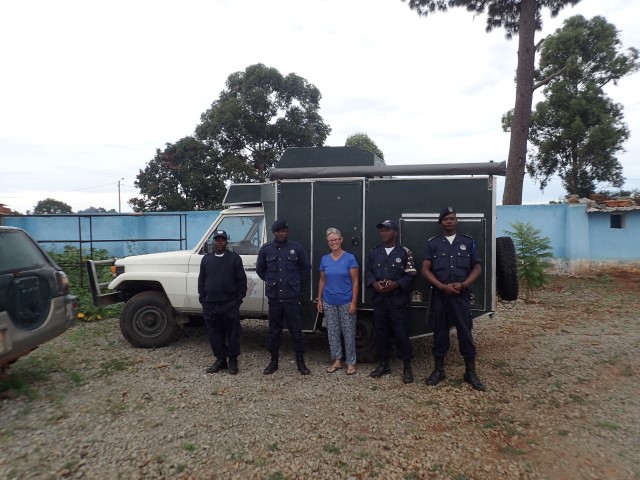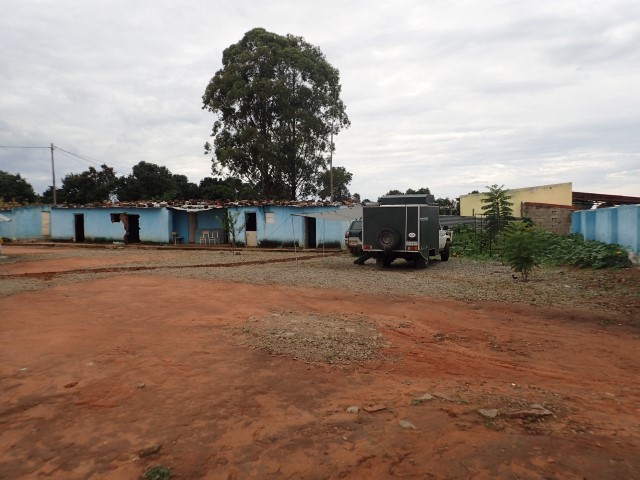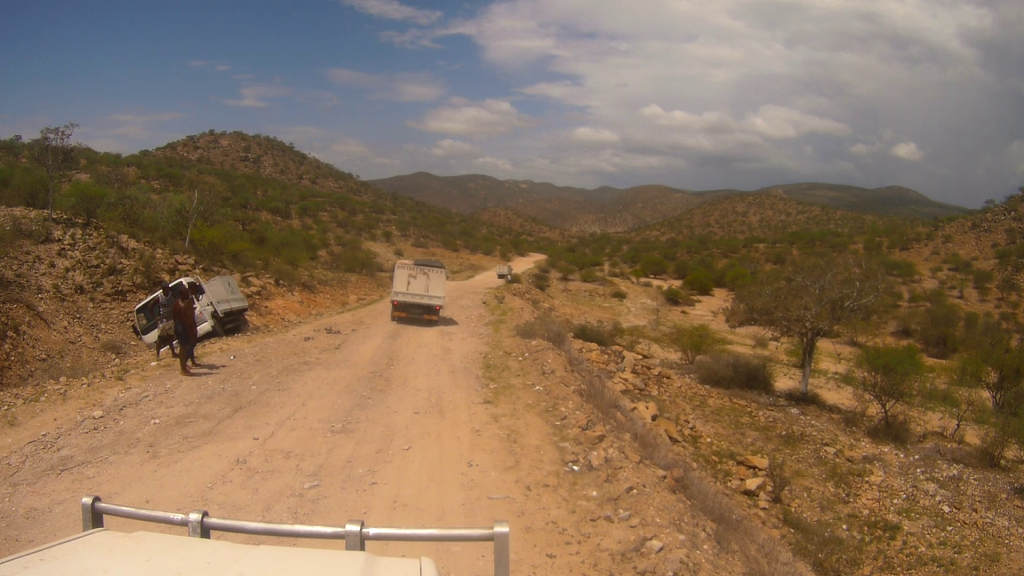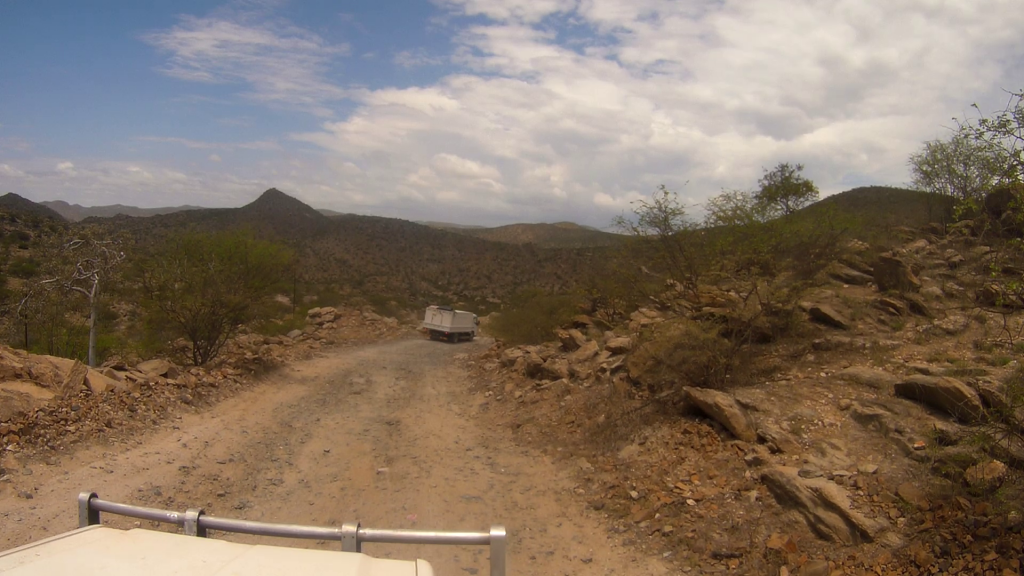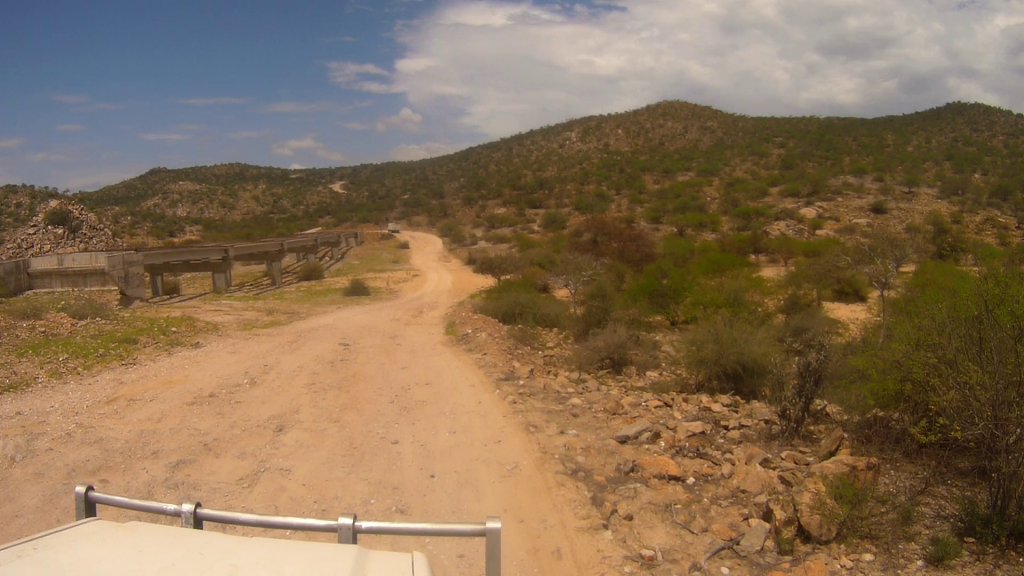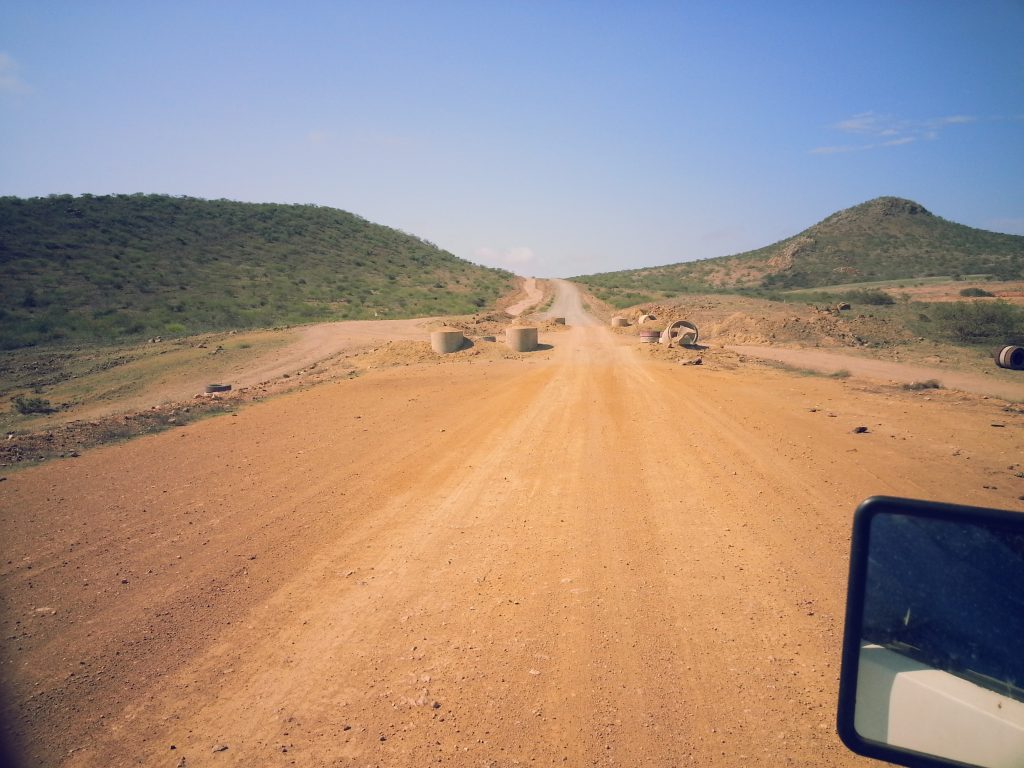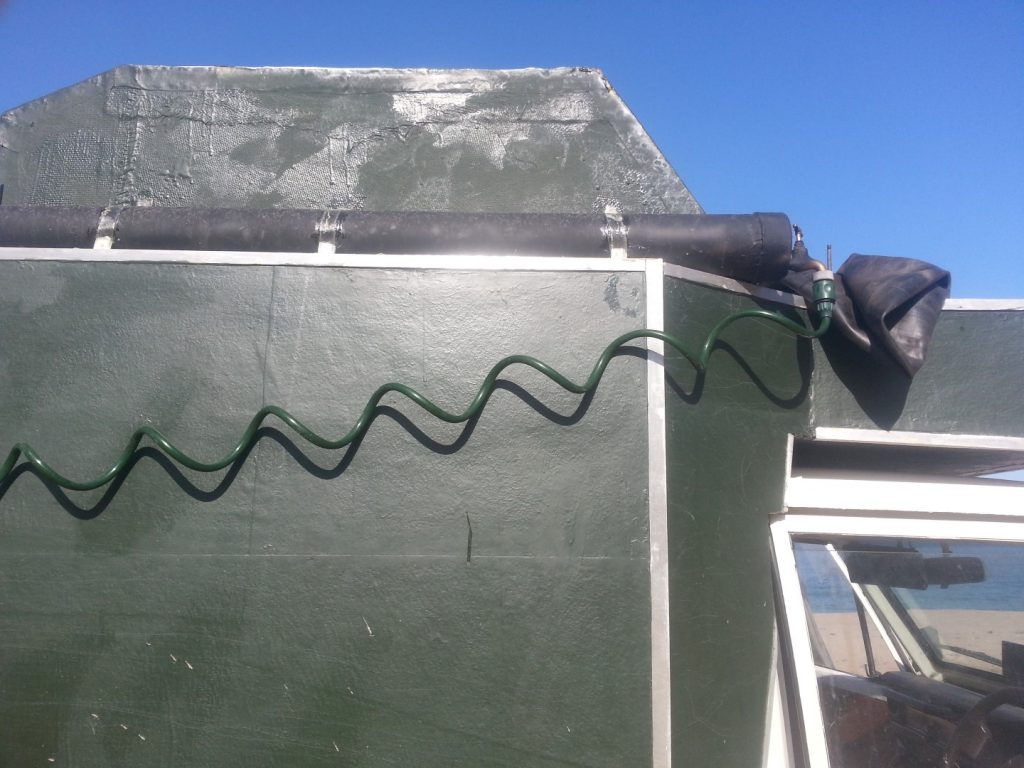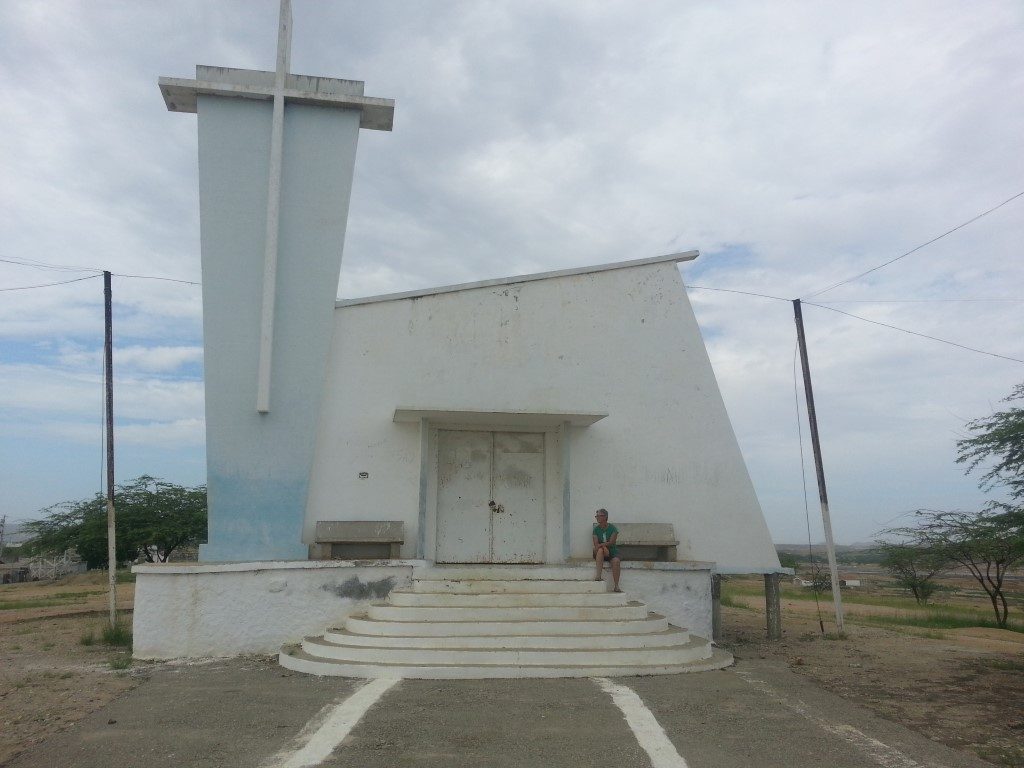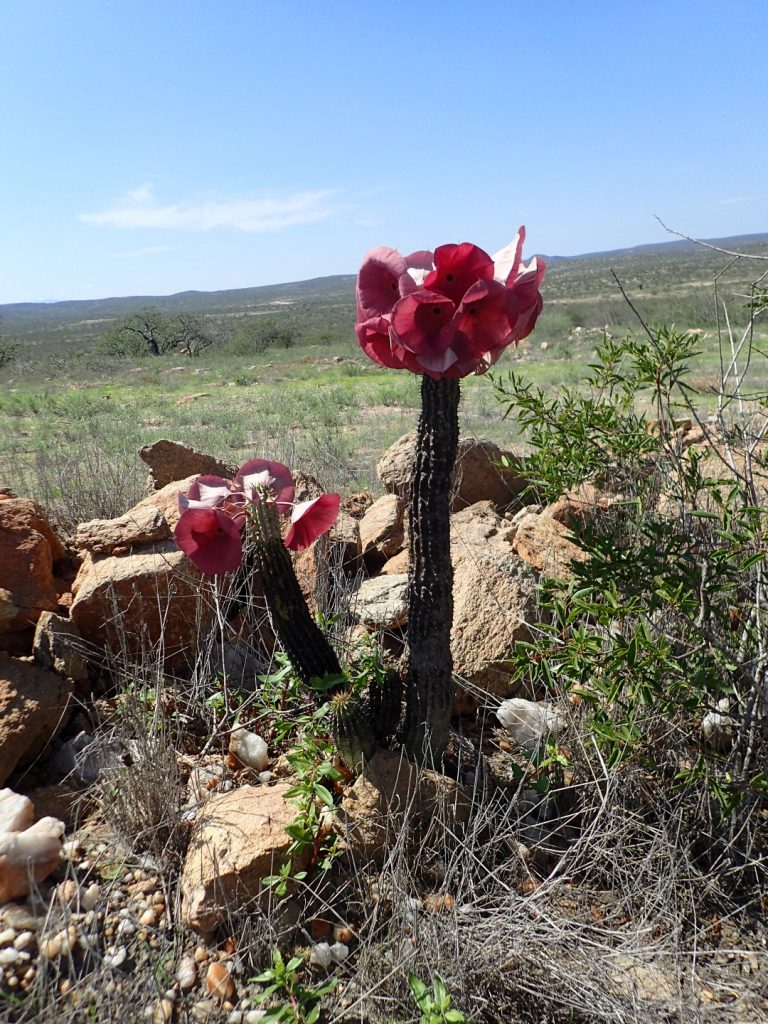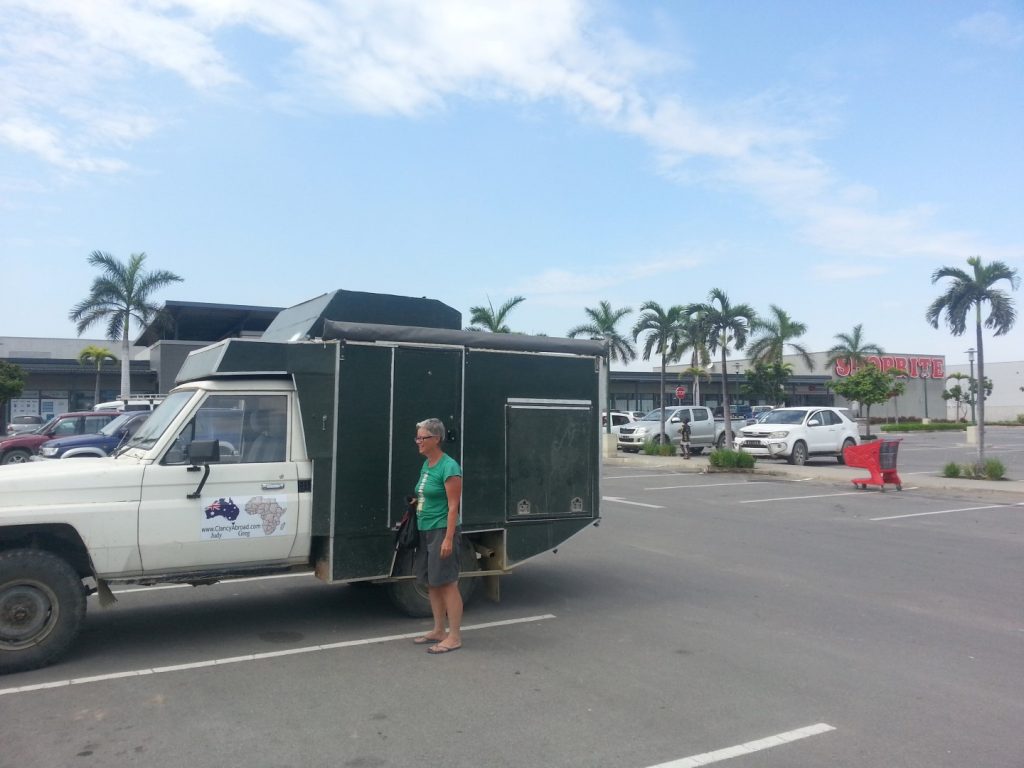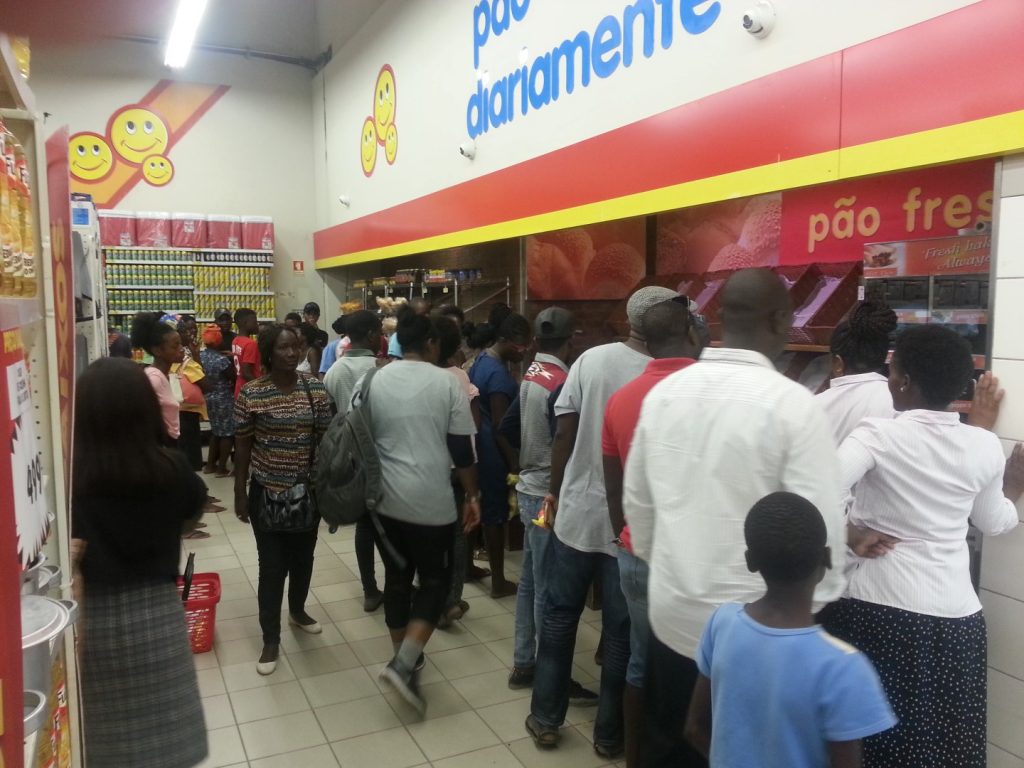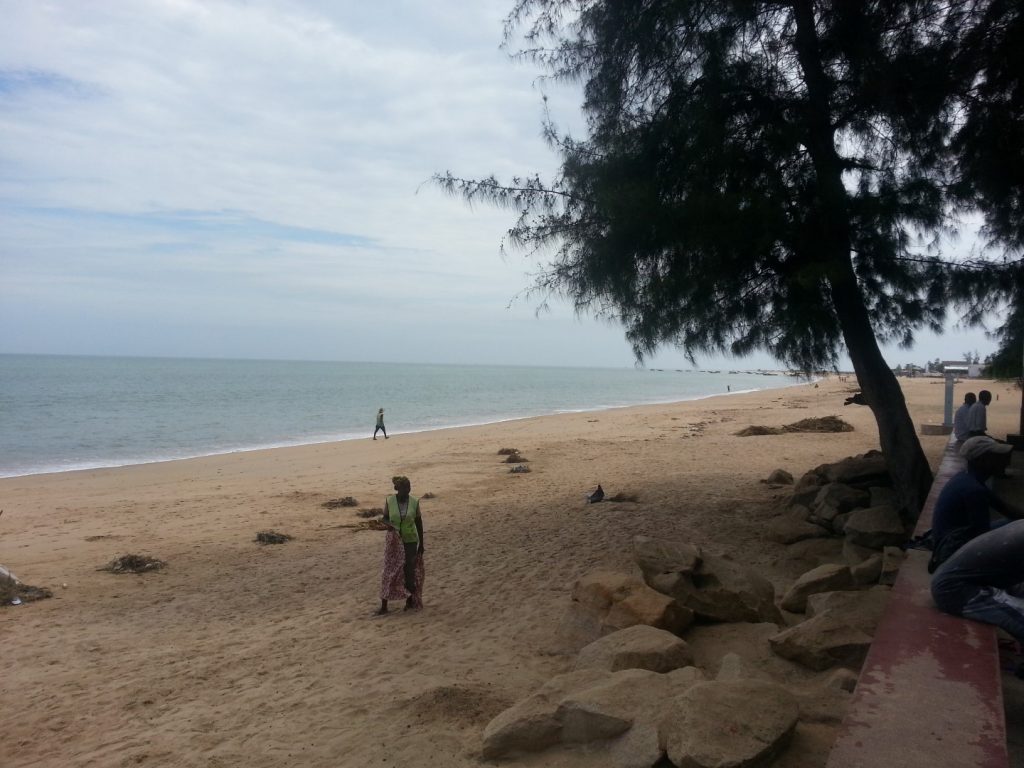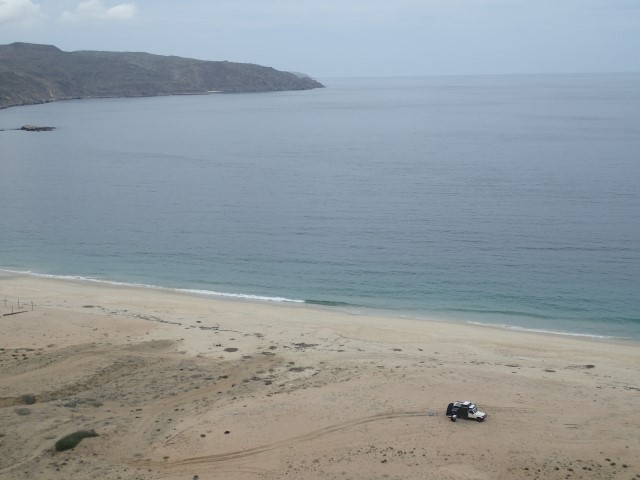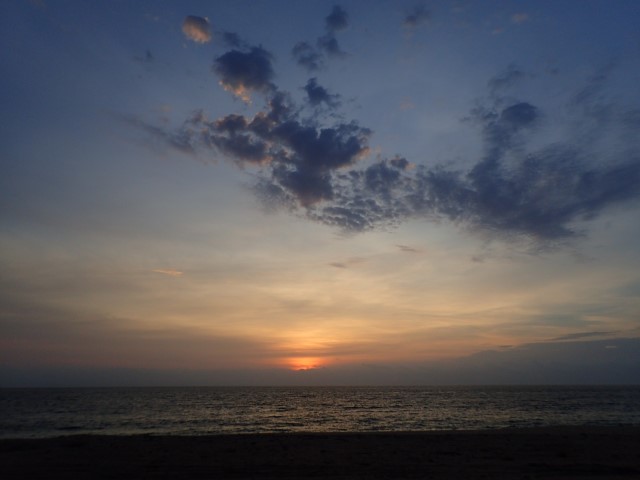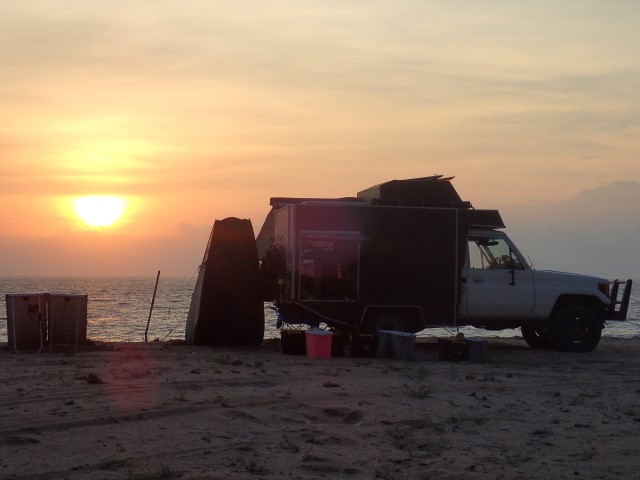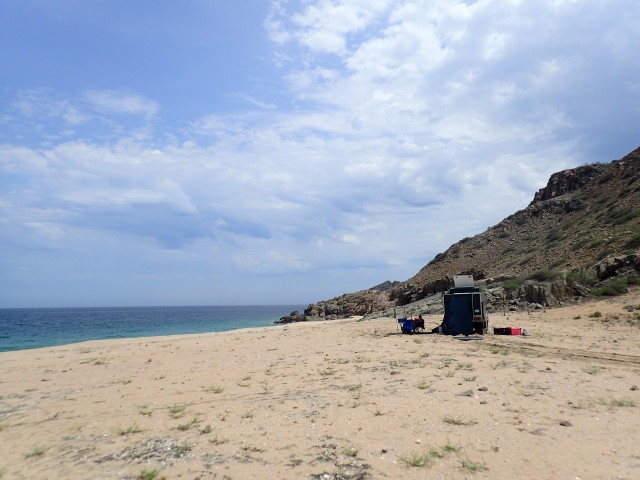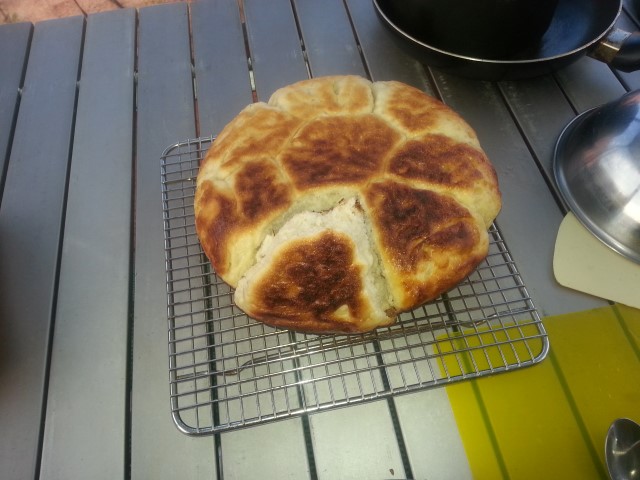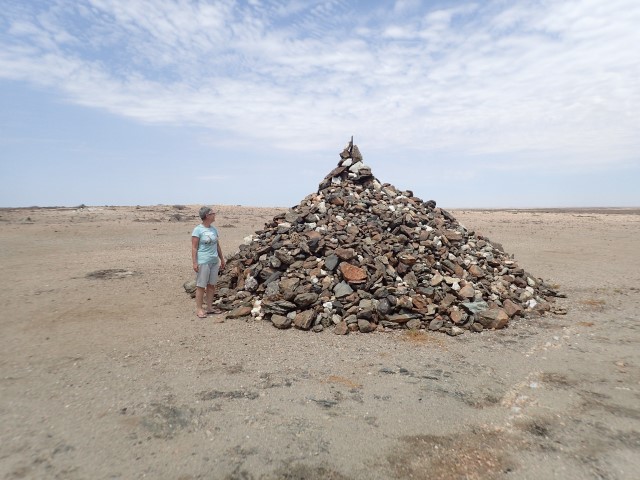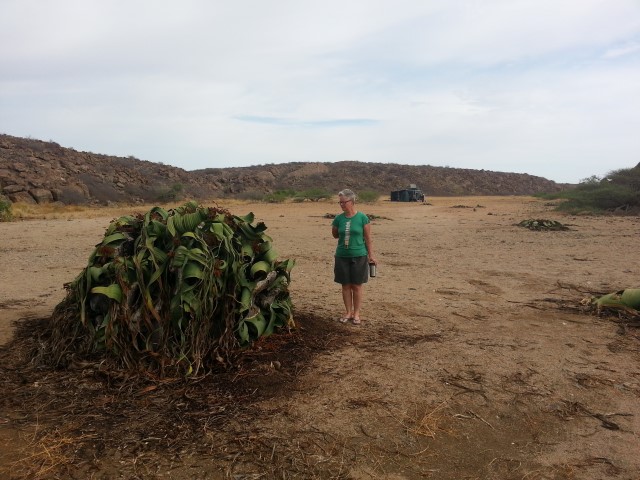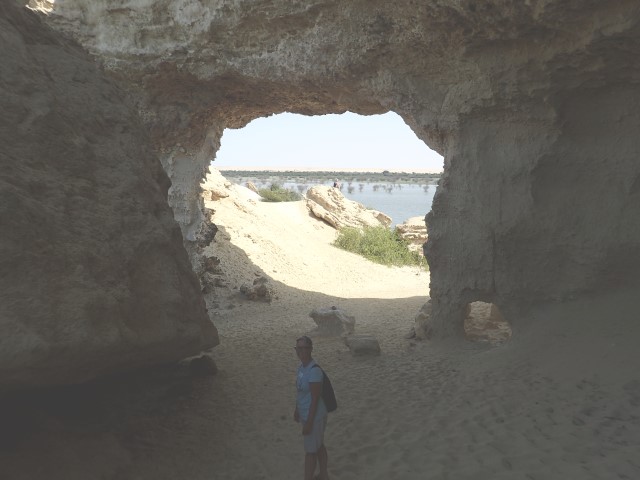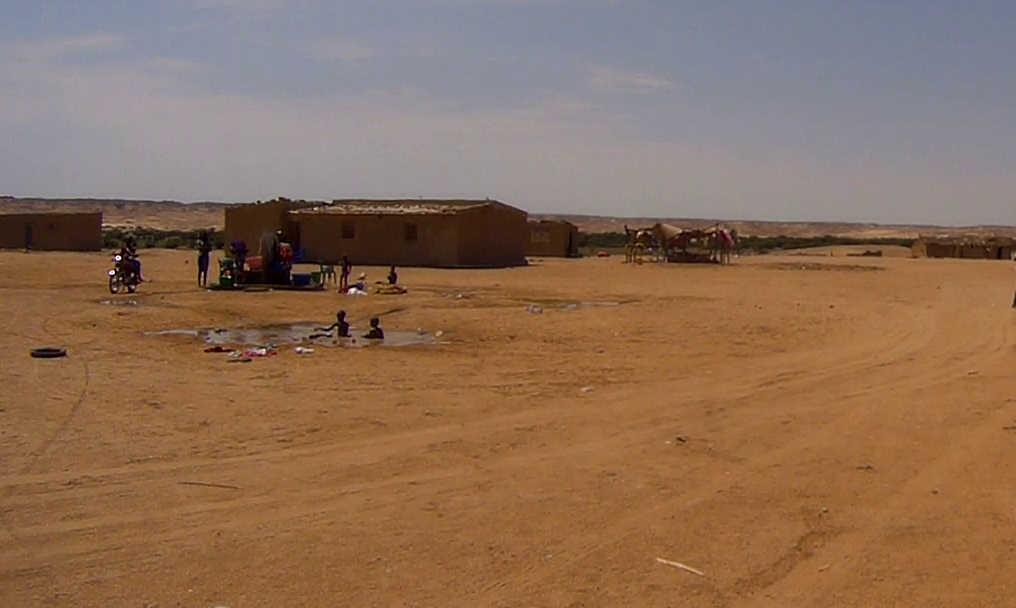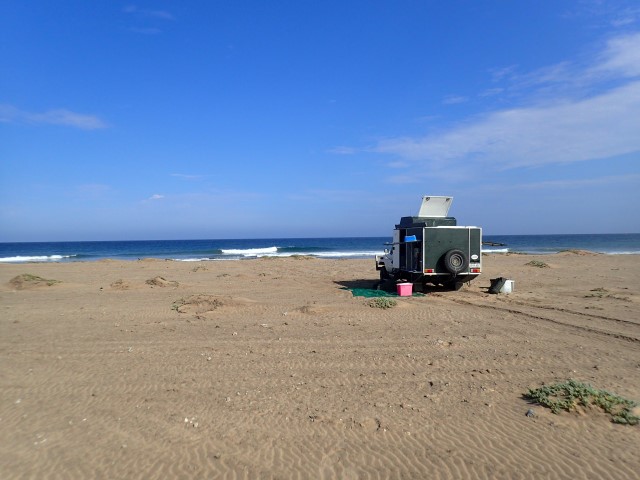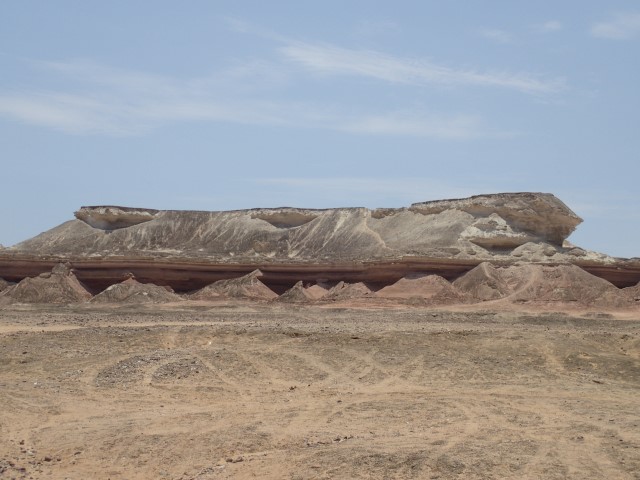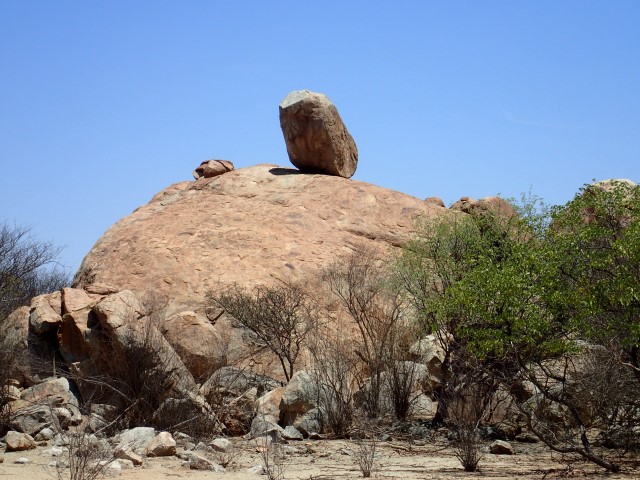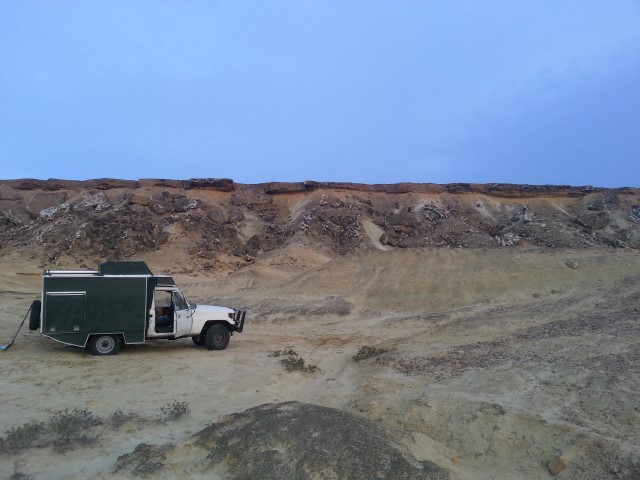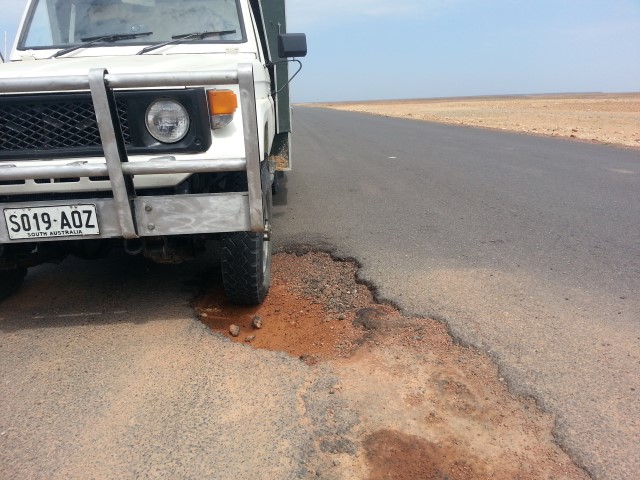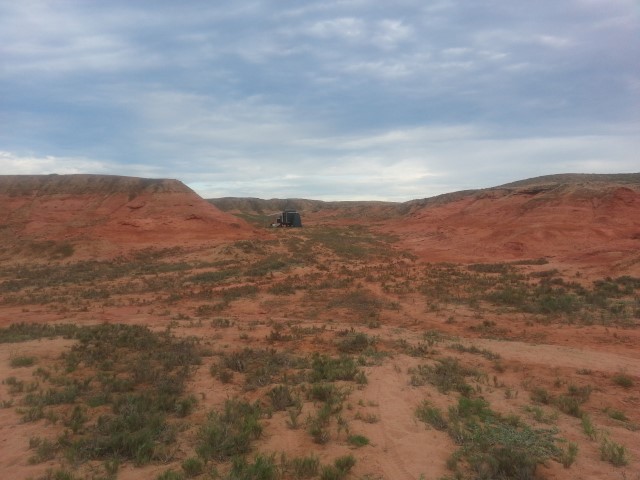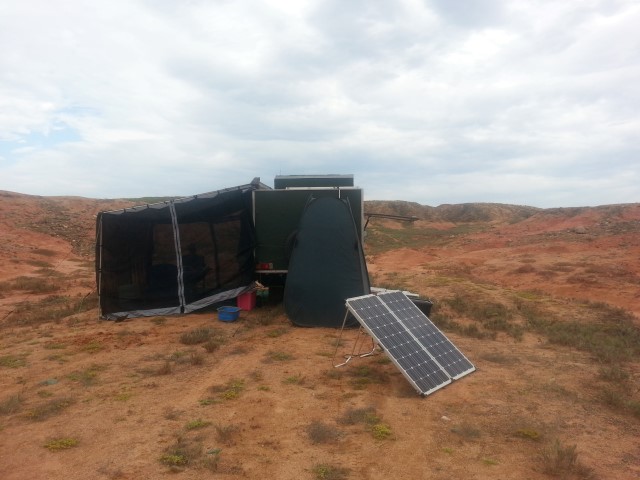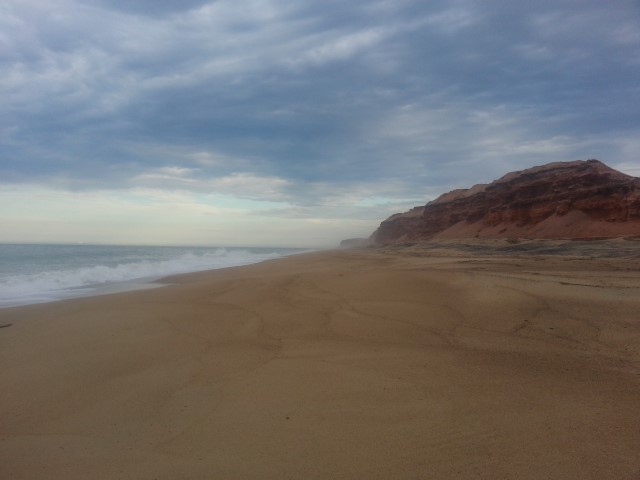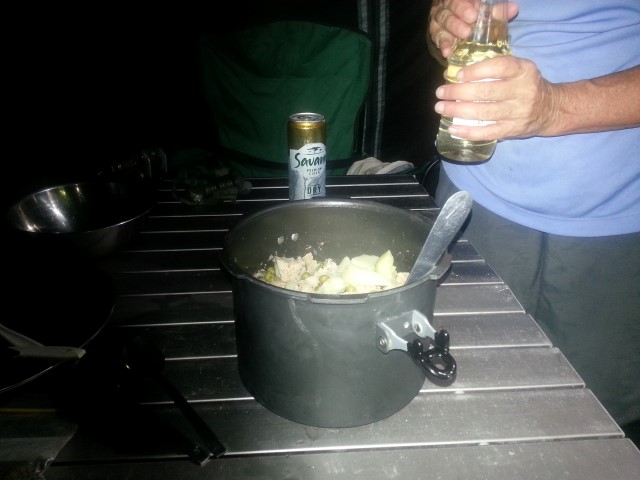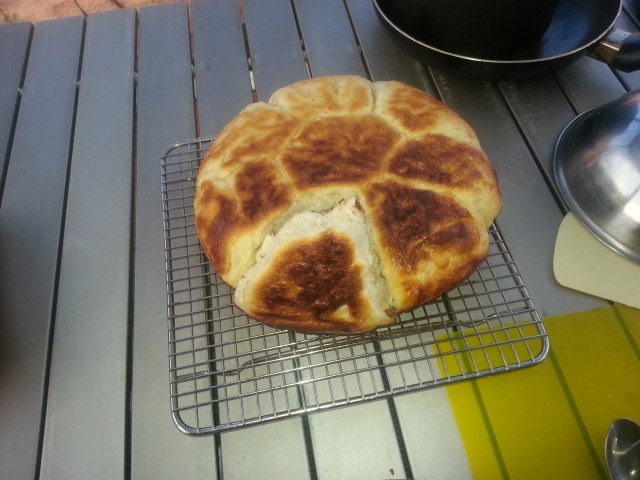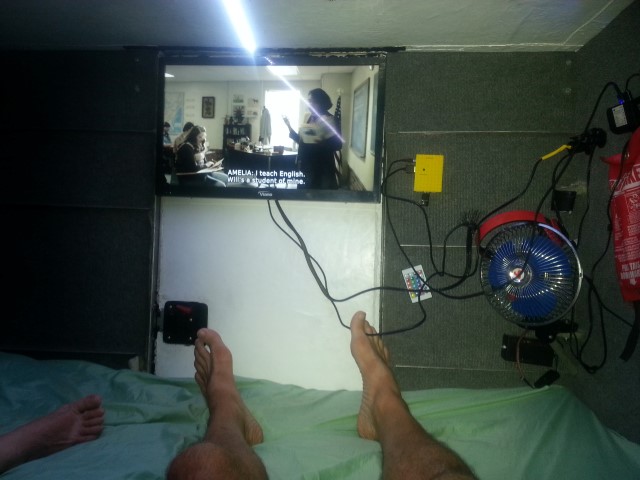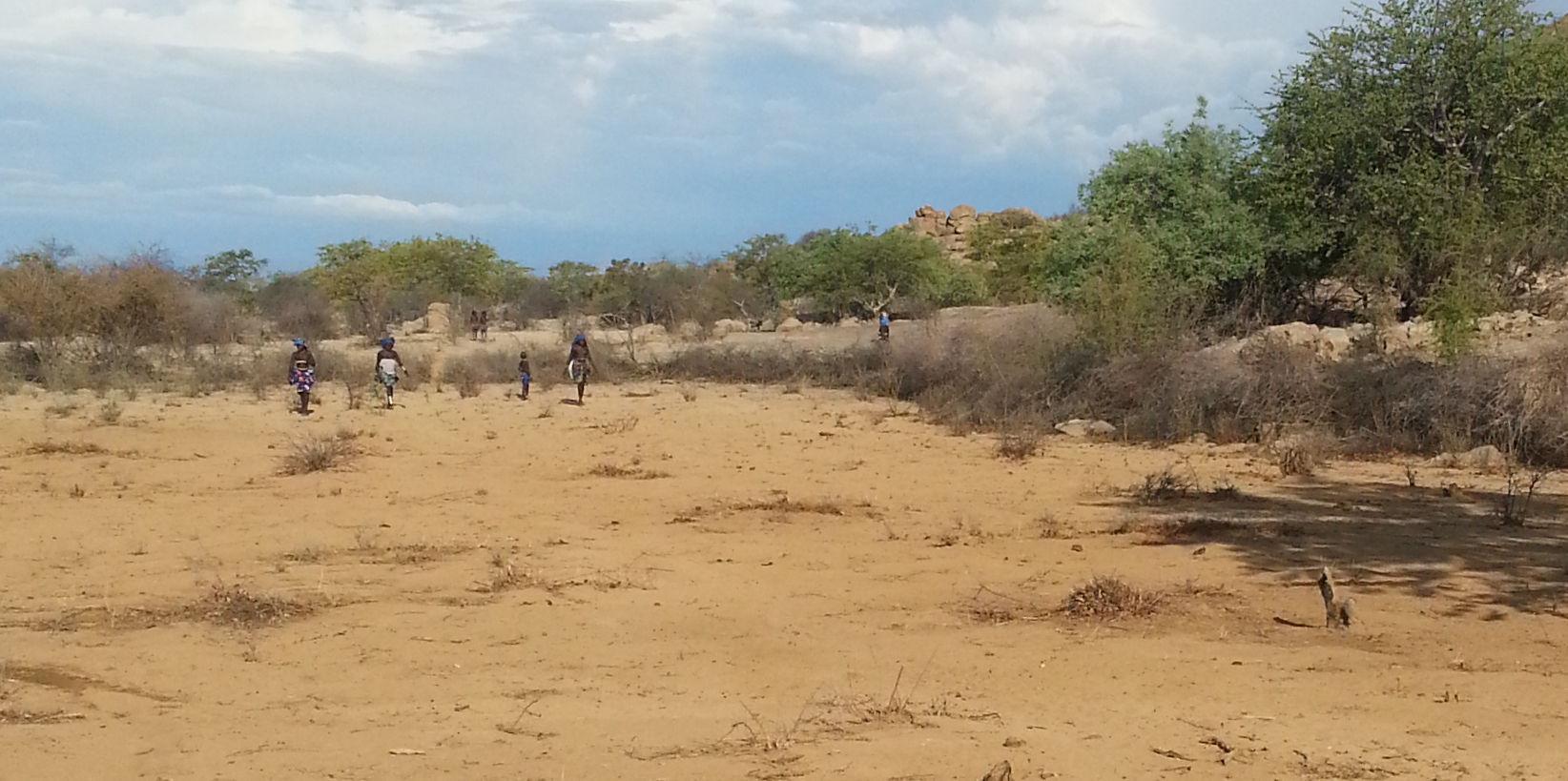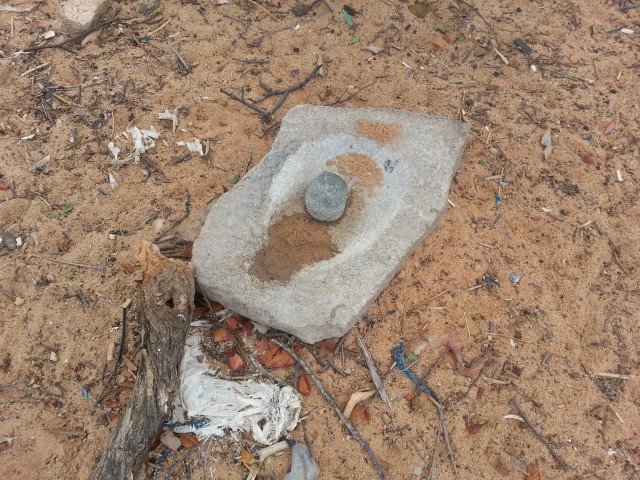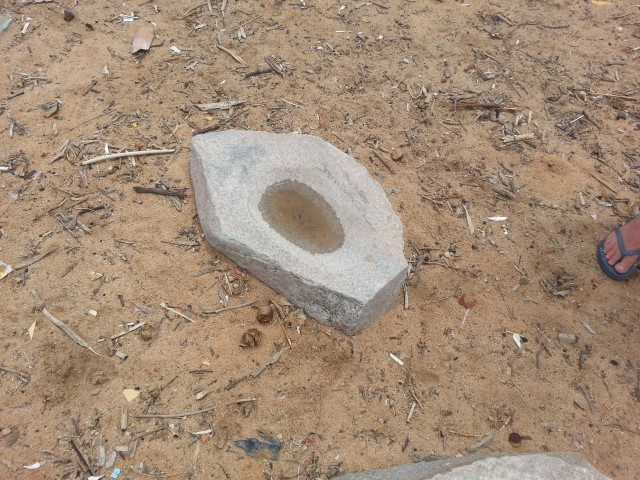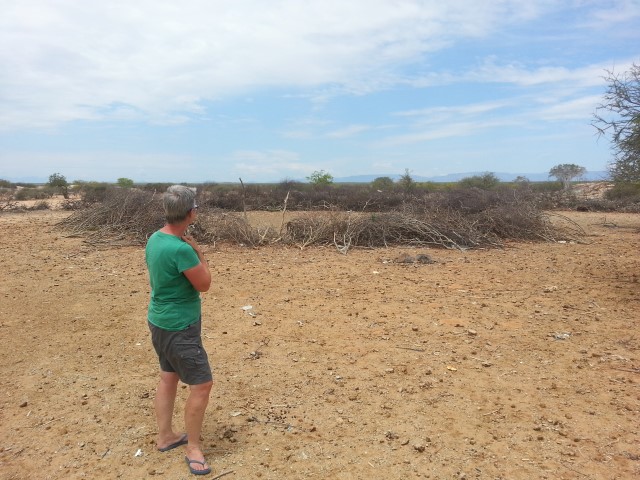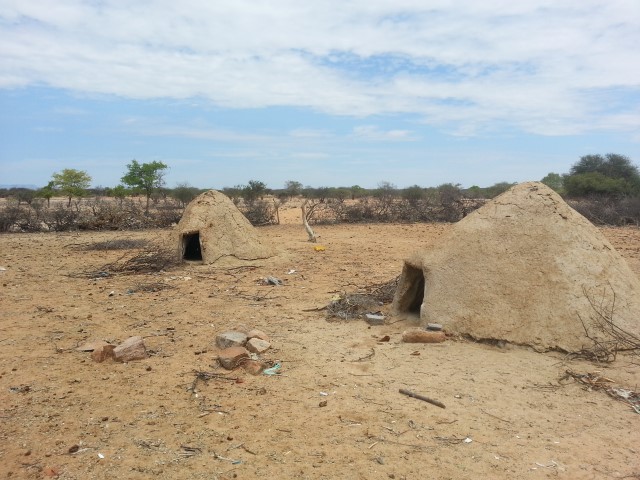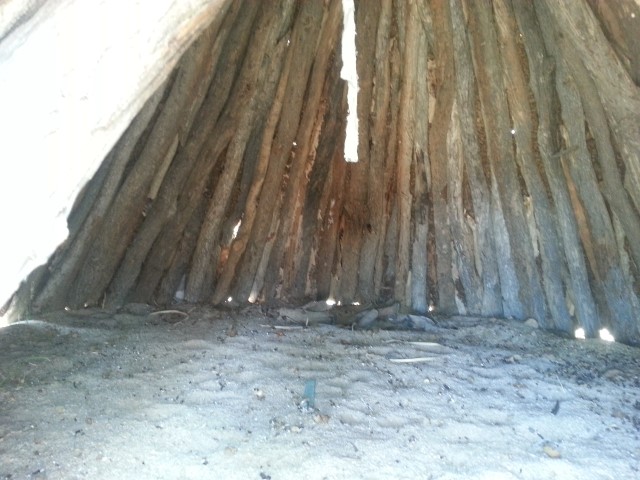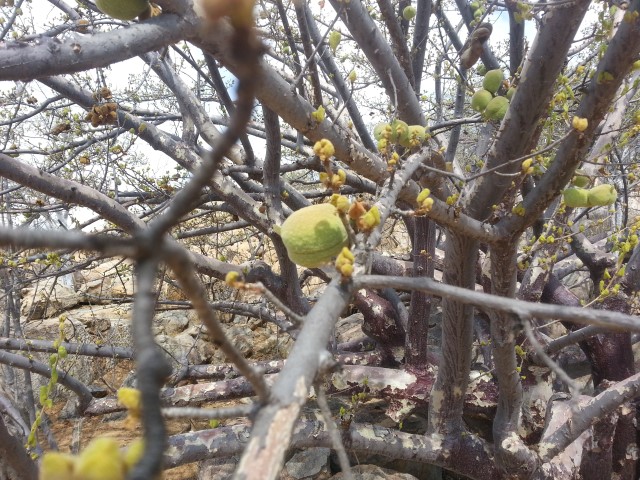We did it! 3 weeks in Angola and we didn’t get sick, injured, arrested or robbed. We really enjoyed (most of) our time there, and feel like we got to see a good cross-section of the country and managed to keep away from the capital Luanda which doesn’t seem to have anything much to recommend it. The Scottish oil worker we met at Arco lives there and he told us not to bother.
We’ve spent the last few days without internet, so let’s have a quick catch-up.
We thought that rather than just head back over the Santa Clara border, we’d see a bit more of the country and cross over further east at Katuitwi / Katwitwi. Greg had saved a trip report of someone’s Angola tag-along tour from a couple of years ago and he gave good information about places they had camped along the way, the condition of the road south to the border and how long it took the group of 15 at each border post. The Angolan post had been recently completed when the author crossed it in 2016, and it had taken the group 8 hours to drive the last 250-ish kms on an unsealed road. So, slow going but we’ve been used to that in Angola.
Blergh, big mistake! The road must have deteriorated since 2016 and it took us a day and a half to do what the tag along group had done in 8 hours. To any overlanders reading this, Don’t Do It! Cross over at Santa Clara or Ruacana.
The author had also very helpfully mentioned a couple of quarries they had camped at along the way, and we stayed at them too, but as we realised the last section would take us more than a day, we had to find somewhere to camp about 60kms north of the border post. In this still-heavily landmined area we couldn’t risk just going off-road and finding something, and there were no convenient tracks for us to just head down, so we ended up on a narrow piece of land between 2 tracks where vehicles had driven to get from one to another. Basically, we camped on a median strip!
The border crossing at both the Angolan and Namibian posts was pretty easy, once we actually found where to go at the spiffy newish mostly unused Angolan post. There were 3 entry booths and an enormous commercial building, a bit like the one at Santa Clara,but it was all sitting empty and overgrown with weeds. No signage, so we just drove until we were stopped by a string across the road, then had to be shown where to find the single immigration desk hidden at the back of a building. It all went smoothly but we were a bit baffled that the customs lady insisted on inspecting nearly all our storage boxes. Um, we’re leaving, what could be in any of those boxes that might be of interest? Anyway, her English was good so I gave her my 2 Women’s Weekly mags. It’s such a quiet post, I thought she might need something to do to keep occupied.
The Namibian side was fine, but Greg had to show the Customs lady there how to fill in our carnet as they don’t get many of them. I noticed on the Immigration officer’s daily log that we were number 4 & 5 to pass through, at about 10.30am. And then when the policeman was checking our paperwork, Greg noticed that ours was the first vehicle for the day. For some reason, even though we had paid our road tax when we entered from South Africa and it was valid for 3 months, we had to pay it again because we were entering from Angola.
And then we were back in Namibia, driving on the left hand side of the road, on a sealed road with line markings and street signs and all that stuff were used to. It was bliss!
This is getting a bit long, so I’ll just add a few general comments about Angola – everyone we met, spoke to and even drove past seems happy and friendly. As a nation the population has a lovely disposition despite, or maybe because of, the incredible hardship of that long civil war and the ongoing poverty amongst the majority.
One of the saddest things we saw were small patches of shredded casava/manioc/yucca being dried on the margin of the main sealed road south before it became a rutted nightmare – what the South Africans call the ‘yellow lane’, the safety or breakdown lane. Better-off locals would dry it in flat baskets or on large squares of fabric within their compound. The poorest people just dried it direct on the bitumen and hope that no vehicle drives over it. When the manioc is dried, it is scraped up, pounded to flour and then mixed with water to make a grey porridgey gloopy mass that is consumed at breakfast, lunch and dinner with small amounts of spice, meat and vegetables. Maize is treated in a similar way.
We saw so many abandoned or incomplete projects, buildings, roads, bridges, multi-storey hotels. This is not a poor country, thanks to its oil, but mismanagement, waste and probably corruption is on a scale we have never seen before.
Would we recommend Angola as a travel destination? Unless you’re an experienced Overlander and have visited other African countries … no. But if you are an Overlander .. absolutely. We’ll remember those 3 weeks for the rest of our lives.
